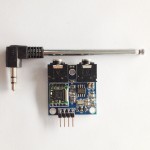Arch is very stable, and highly customizable linux distro. You will like it if you want to build your OS up from scratch.
Prepare partition
You can use gparted from Ubuntu Live CD or another GUI tool to create root, home, and swap partitions. Or you can follow the following instruction.
Login as root.
# cgdisk /dev/sda
Create root partition
- Hit New -> Enter
- First Sector -> Enter
- Size in Sector -> 15GB -> Enter
- Hex Code of GUID (L to show codes, Enter = 8300) -> Enter
- Enter partition name – > Enter
- Now you will see a 15GB partition has been created.
Create swap partition
Use keyboard and select Free Space. If your RAM is 2GB, then you need 4GB or swap space. Swap space is extra memory for when you suspend your computer.
- Hit New -> Enter
- First Sector ->
- Size in Sector -> 4GB -> Enter
- Hex Code of GUID (L to show codes, Enter = 8300) -> Enter
- Enter partition name – > swap
Swap has been created.
Creating home partition
Use keyboard and select Free Space
- Hit New -> Enter
- First Sector -> Enter
- Size in Sector -> 40GB -> Enter
- Hex Code of GUID (L to show codes, Enter = 8300) -> Enter
- Enter partition name – > home -> Enter
Once ok select ‘Write‘. Type ‘yes‘ if you are sure, and then select ‘Quit‘.
Check the structure of partition by running this command:
# lsblkYou will see your hard-disk structure as follows:
sda1 – root
sda2 – swap
sda3 – home
Create file system
Format root and home
# mkfs.ext4 /dev/sda1# mkfs.ext4 /dev/sda3
Format swap space
# mkswap /dev/sda2
# swapon /dev/sda2Double-check your format
# lsblk /dev/sdaInstall & Configure Base System
Mount drives
# mount /dev/sda1 /mnt
# mkdir /mnt/home
# mount /dev/sda3 /mnt/homeInstall base packages
# pacstrap -i /mnt base base-devel
Configure Mounting
# genfstab -U -p /mnt >> /mnt/etc/fstab
Check if all looks good:
# nano /mnt/etc/fstab
Configure System
Log as root in the partition. This is a very important step that you install stuff on your newly created parition and not in the Live CD OS which will be removed when you log out.
# arch-chroot /mntSetup Locale
# nano /etc/locale.genUncomment this: en_AU.UTF-8 UTF-8
# locale-gen# echo LANG=en_AU.UTF-8 > /etc/locale.conf# export LANG=en_AU.UTF-8
Set up timezone
# ls /usr/share/zoneinfo/
# ln -s /usr/share/zoneinfo/Australia/Melbourne> /etc/localtime
You must adjust the country and city according to yours.
Set up Clock
# hwclock --systohc --utcPrepare Users
Set your root password:
# passwdAdd a sudoer user. Change the last word with your username:
# useradd -m -g users -G wheel,storage,power -s /bin/bash linuxcircle
# passwd linuxcircleInstall Sudo
# pacman -S sudo
# pacman -Ss sudo
# EDITOR=nano visudoUcomment this line:
%wheel ALL=(ALL) ALL
Install Bootloader
# pacman -S grub
# grub-install --target=i386-pc --recheck /dev/sda
# pacman -S os-prober
# grub-mkconfig -o /boot/grub/grub.cfg
# pacman -S os-proberSetup Network
If you are running eth cable.
# systemctl enable dhcpcd.service
# systemctl start dhcpcd.service
If you are running wifi
# pacman -S wireless_tools wpa_supplicant wpa_actiond dialog # wifi-menu
Chose your wifi access point, then enable it on boot.
# systemctl enable network-wireless@wlan0.service # systemctl start network-wireless@wlan0.service
Final Steps
# exitUnmount the root, home and reboot the system:
# umount -R /mnt# reboot

